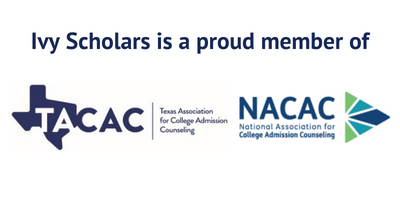In college admissions, there is a general trend that private universities offer students Early Decision or Restrictive Early Action, and public universities offer students early action. Now, many private colleges also offer early action, but very few public universities offer early decision. In a recent announcement, the University of Michigan bucked that trend, and stated that in the coming year, they would have a new Early Decision option for applicants.
This raises many questions, like why are they doing this, why other public colleges don’t offer ED as an option, and how this will impact students who want to apply to U of Michigan. In this article, we’re going to go through all of those points, and also investigate some new programs U of M has announced. Let’s get started!
Why Don’t Public Colleges Offer Early Decision?
To understand why UMichigan decided to make this choice, first we need to understand why public colleges don’t offer early decision for the most part. This gets back to why early decision was created in the first place; to manage yield and attract particularly bright students at top private colleges.
Top colleges are in constant competition with each other. They compete for grant money, for spots in the rankings of the elite, and for the best students. Early decision was a way for these colleges to lock in a certain percentage of their incoming class early, improving their yield and guaranteeing that some students they very much wanted to attend would do so.
Public universities, by contrast, focused on volume, existing to serve all of the best and brightest high school students their state produced, along with a smattering of others. As we can see from trends in admissions rates, it used to be relatively easy to get into even some of the best public colleges. These colleges offered an early deadline, but that was more for administrative reasons; with the volume of applications they received, they needed an early start to have any chance of getting decisions out in a timely manner.
Now, however, many top public schools are just as competitive as private colleges used to be. Public colleges do often lose out on some of the best and brightest students to the Ivy League or other private schools, and have far lower yield rates; this implementation of early decision policies is meant to counter both, just as they were when they were implemented at private colleges. There was never any rule saying public colleges couldn’t offer ED admissions, and so as the admissions landscape has changed, they have changed with it.
It remains to be seen if this trend will spread to other public universities, but we are certain many of them will be watching to see how the situation unfolds at UMichigan. If the program is a major success for the school, it is likely that peer institutions will consider implementing ED applications of their own.
How Early Decision Works at UMichigan
The school explains how this plan works, and how it compares to their other options, on their website. We’re going to analyze what they say here, and read between the lines a bit as well, so we understand both what they say, and what they really mean.
After this change, UMichigan offers three admissions plans:
- Early Decision, the new plan. This binds you to attend UMichigan if admitted (except for reasons of affordability), and has a deadline of November 1, with admissions decisions released in December.
- Early Action. Michigan is continuing their existing Early Action plan, which will operate as it ever did. This program is fully non-binding. Applications are due by November 1, and decisions are released in January.
- Regular Decision. The deadline for this is February 1, but we advise our students to apply early each year; Michigan is a very popular school, and seats in the best programs fill up quickly.
Note that the financial aid deadline is December 15 regardless of which admissions plan you choose. While this is only a suggestion for EA and RD, we still advise submitting your financial aid application by this date, to give you the best possible chance of receiving aid.
According to their site, all applicants will be reviewed using the same holistic review process. We do believe the process and criteria will be the same regardless of review, but that different rounds of applicants will be treated differently.
Of course, we will need to wait a full year to get the admissions results released to see how this plays out, but our belief, based on how early decision and early action work at other universities, is that applying early decision will boost your chances of admission quite a bit, while applying early action won’t do much. That said, there are two important caveats to consider.
The first is that this is the first year Michigan is doing an ED program, so we expect some fiddling while they try and get the numbers right. Colleges do not want to admit too many or too few students, and getting the right balance, especially when adding in students who are guaranteed to attend through ED, can be tricky. Many private colleges admit half their class or slightly more through ED; it remains to be seen what percentage Michigan is aiming for.
The second caveat is that most students apply to Michigan EA anyway, especially those desiring financial aid, and that if you do not apply ED, you should still apply to the school EA. This is also likely to skew the average acceptance rate across plans, but to what extent remains to be seen.
Should You Apply to UMichigan ED?
So now that we understand what Michigan’s ED program is, and how it differs from their other admissions plans, the natural question is whether or not this program is the right choice for you. This, as with so many other things in college admissions, depends on a number of factors; we will go through each of them.
The first, and most important factor, is whether or not UMichigan is your top choice school. As always when applying to a college ED, you should only make such a binding commitment if you are actually certain there is no other school you would rather attend. If you commit to Michigan, then get into MIT, would you be utterly crushed? This is a discussion we have each year with students, and you should carefully weigh all of your options.
The next question is one of cost; unlike many private colleges, Michigan does not have nearly as generous aid, especially for out of state students. Thus even if you apply and commit to attending, you may find the aid package you are offered to be insufficient to feasibly attend the school. Aid calculators are useful tools to see how much aid you might get, but these are not promises from the school; and the amount of aid you get can only be known after they reach a decision.
Finally, you should consider what other colleges you are applying to, and how much an ED boost will help. Applying early decision is something of a silver bullet; it greatly increases your chances of acceptance, but can only be used once. It is a strategic choice if you want to use it for a school like Michigan, or aiming for one with an exceptionally low acceptance rate, such as UChicago.
Other Admissions News Out of UMich
In addition to new application pathways, Michigan is also introducing an entirely new program students can apply to, a dual degree in business and engineering. This four year program combines studies from both Michigan’s College of Engineering and Ross, granting students mastery in both fields, and the intersection between them.
This program is meant to be comparable to other joint programs in business and technology, such as those offered by UPenn or Berkeley. It is intended for students who want to enter the growing tech sector, seeking out jobs in the boom of Silicon Valley startups.
Students interested in this program should select Ross as their first year unit, with “Business and Engineering integrated dual degree” as their chosen major. You must meet all of the admissions requirements for both Ross and Engineering. The application requires the regular materials required by Michigan, along with the Ross supplement. There are no additional requirements for the program itself as of yet.
The program does not list what they consider when evaluating applicants, and they are probably still working on how admissions will function. That said, based on the parent schools and similar programs, we can anticipate what they want to see from students:
- First, that you have shown a clear interest in both fields, and the intersection between them, through your extracurricular pursuits. This can be through pursuing your own entrepreneurial dreams, internships, or other activities that explore business and technology.
- That you are fully academically qualified, with high grades in your math and science classes, and with a firm grounding in math, having taken classes at least through calculus.
- That you have shown a commitment to your community, and have a strong desire to drive innovation.
Final Thoughts
Colleges tweak their admissions process slightly every year, but sometimes things change a lot, and quickly. We hope this article has given you a good overview of all of the changes that UMichigan has added to their admissions cycle this year, and how they will impact both the process as a whole, and you specifically.
This was, by necessity, a general overview of the new admissions track and whether it is right for you. If you are looking for advice which is specific to your own particular situation, then Ivy Scholars can help. We have a long expertise helping students from all kinds of situations find the perfect colleges for them, and can greatly improve your odds of acceptance, regardless of where you apply. Schedule a free consultation today to learn more; we’re always happy to hear from you.








